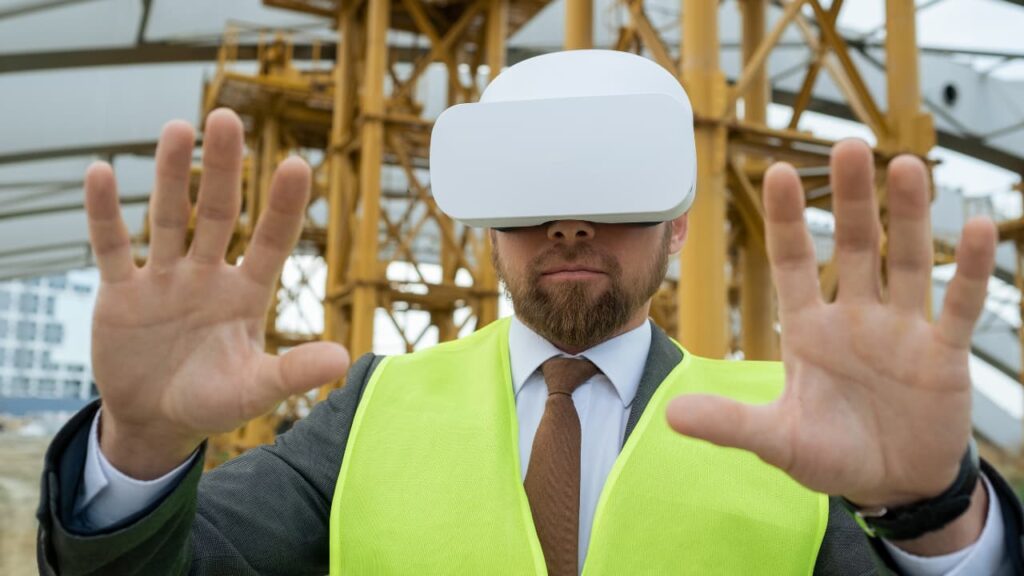The adoption of Virtual Reality (VR) technologies in the construction industry marks a transformative shift, offering substantial benefits that range from enhanced project visualization to improved safety training. As the construction sector faces increasing complexity and demands for precision, VR emerges as a pivotal tool, reshaping traditional practices and workflows. This article delves into the numerous advantages of VR technologies in construction, underscoring how this digital innovation is driving efficiency, accuracy, and sustainability.
Enhanced Visualization and Design Accuracy
One of the primary advantages of VR in construction is the ability to visualize architectural designs and engineering plans in a three-dimensional space. This immersive experience allows architects, engineers, and stakeholders to walk through virtual models of buildings or infrastructure before physical construction begins. Such visualization not only helps in better understanding the spatial relationships and potential design conflicts but also enables modifications in real-time, reducing the likelihood of costly errors during construction.
Improved Collaboration and Communication
VR technology fosters enhanced collaboration among various project teams, including architects, engineers, contractors, and clients. By accessing a unified VR platform, all stakeholders can view and interact with the project models simultaneously, irrespective of their physical locations. This synchronous interaction ensures that everyone is on the same page, leading to clearer communication, faster decision-making, and a more cohesive project development process.
Advanced Safety Training and Risk Assessment
Safety remains a paramount concern in the construction industry. VR provides an effective tool for safety training by simulating hazardous conditions and scenarios in a controlled virtual environment. Workers can practice navigating through these scenarios, learning to identify and respond to potential risks without the actual dangers. This type of training is particularly beneficial for preparing teams for high-risk activities, enhancing overall site safety and reducing the incidence of accidents.
Increased Project Efficiency and Cost Savings
The ability to visualize and test various construction scenarios in VR can lead to significant improvements in project efficiency. By identifying design mismatches and operational bottlenecks early in the project lifecycle, construction teams can avoid delays and minimize downtime. Moreover, VR aids in optimal resource allocation and scheduling, thereby reducing waste and controlling project costs. This preemptive approach not only saves money but also accelerates project timelines, allowing for quicker project turnovers.
Enhanced Client Satisfaction and Engagement
VR technologies elevate client engagement by providing immersive previews of proposed projects. Clients can visualize the end product in a detailed and interactive manner, offering them a tangible sense of the space and design. This level of involvement not only enhances client satisfaction but also aids in securing approvals and consensus swiftly, facilitating smoother project progression.
Sustainable Construction Practices
By optimizing the design and construction processes through VR, the construction industry can achieve greater sustainability. Improved accuracy in planning and execution leads to less material waste and more efficient use of resources. Additionally, VR can aid in the integration of sustainable elements into building designs, such as energy-efficient layouts and eco-friendly materials, by allowing stakeholders to assess the impact and feasibility of these elements virtually.
Training and Education
Beyond immediate project applications, VR serves as a powerful educational tool in the construction sector. Educational institutions and training programs can utilize VR to provide students and new workers
with a realistic insight into construction processes and challenges. This hands-on learning approach enhances educational outcomes and better prepares the workforce for real-world construction environments.
Conclusion
The integration of VR technologies in the construction industry
offers a myriad of benefits that streamline project workflows,
enhance safety, and promote sustainability. As the industry continues to evolve
, embracing these digital tools will be crucial for staying competitive and meeting the increasingly complex demands of construction projects. VR not only revolutionizes how buildings are designed and constructed but also significantly improves stakeholder engagement and project outcomes.

